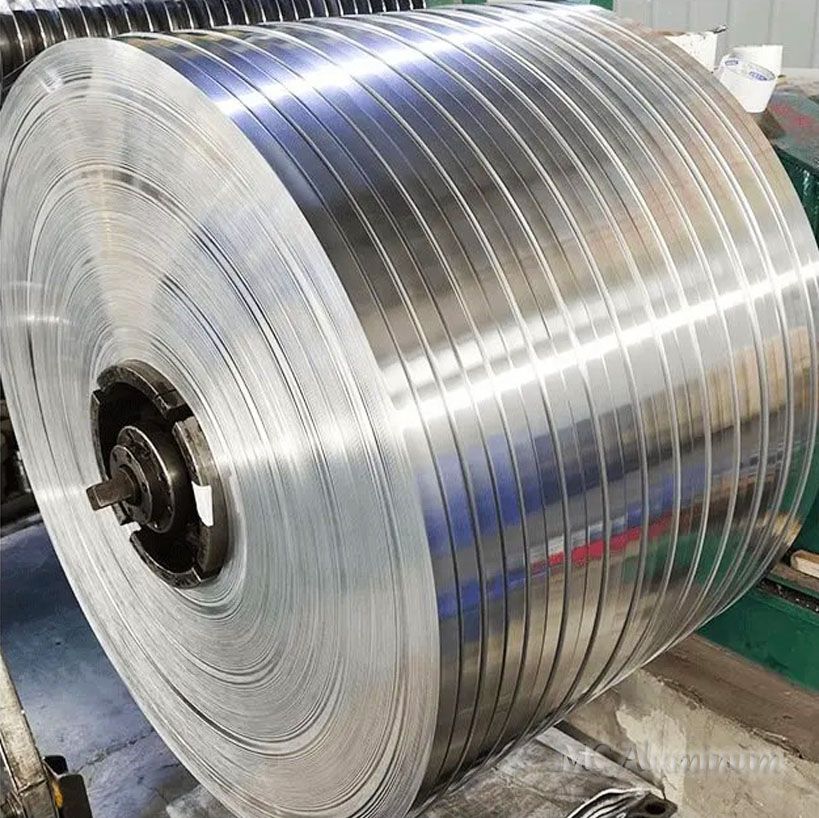Anodized thin aluminum strip 1060 3003 5052
Anodized thin aluminum strip refers to a metal material that forms a layer of aluminum oxide film on the surface of thin aluminum strip through an anodizing process. This oxide film not only enhances the oxidation resistance of aluminum, but also provides excellent hardness and wear resistance. At the same time, this film layer has excellent dyeing properties, which can give aluminum strips a variety of colors to meet different design requirements.
Anodized thin aluminum strips can be made of a variety of aluminum alloys, such as 1060, 1070, 3003, 3102, 3004, 5052, 5083, etc., with a thickness range of 0.02mm to 0.2mm to meet the needs of different application scenarios. It is widely used in mechanical parts, aircraft and automobile parts, precision instruments and radio equipment, architectural decoration, machine housing, lighting, electronic consumer products, handicrafts, household appliances, interior decoration, signs, furniture, automotive decoration and other industries.
Features of anodized thin aluminum strip:
1. Strong corrosion resistance: The dense structure of the oxide film can effectively protect the substrate and extend its service life.
2. Good aesthetics: Rich color effects can be achieved through dyeing to meet decorative needs.
3. Excellent wear resistance: The oxide film has a high hardness and can keep the surface intact in high-frequency use scenarios.
4. Lightweight: The aluminum material itself is light in weight. By optimizing the thickness of the thin strip, the product weight can be further reduced to meet the needs of the aviation, automotive and other industries.
5. Environmental protection: The anodizing process is relatively environmentally friendly, and less waste is generated during production, which is easy to recycle.

Manufacturing process of anodized thin aluminum strip:
Anodizing is an electrochemical reaction process that improves its corrosion resistance and mechanical properties by forming a dense oxide film on the surface of aluminum in an electrolyte. The following are the main production steps of anodized thin aluminum strip:
1. Surface cleaning: Remove grease and oxides on the surface of the aluminum strip by alkaline washing and acid washing.
2. Anodizing: Use the aluminum strip as an anode and place it in a tank containing electrolytes such as sulfuric acid and oxalic acid to generate an oxide film through electrolysis.
3. Dyeing or sealing: Depending on the needs, the oxide film can be dyed or sealed to improve durability.
4. Post-processing: including drying, curling or cutting to meet the needs of different specifications.
Application scenarios:
1. Electronic products: widely used in the shell and shielding materials of smartphones and tablets, providing wear resistance and aesthetics.
2. Architectural decoration: used for curtain wall, ceiling and facade decoration, enriching the color and texture of architectural design.
3. Transportation: in the aerospace and automotive industries, it is used in composite materials and structural components due to its lightweight and high-strength characteristics to reduce weight and save energy.
4. New energy field: used in lithium battery separators, electrolytic capacitors and solar reflectors to promote sustainable development.
MC Aluminum has been specializing in the production of 1-8 series aluminum strips for more than 20 years. It has a complete range of product models, stable quality, sophisticated production processes, advanced technology and equipment, and exports to many overseas countries. It has a short delivery time and can accept 1-200 tons of orders at a preferential price.







Contact Us